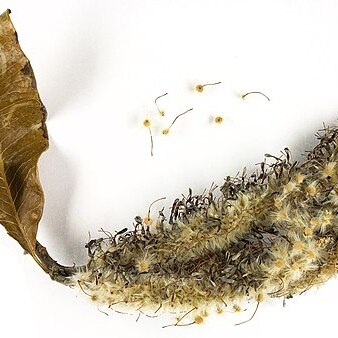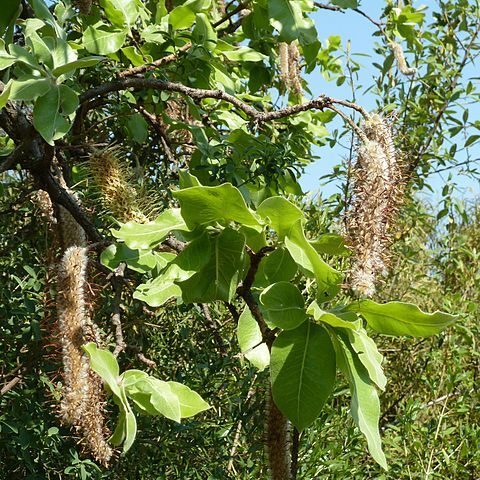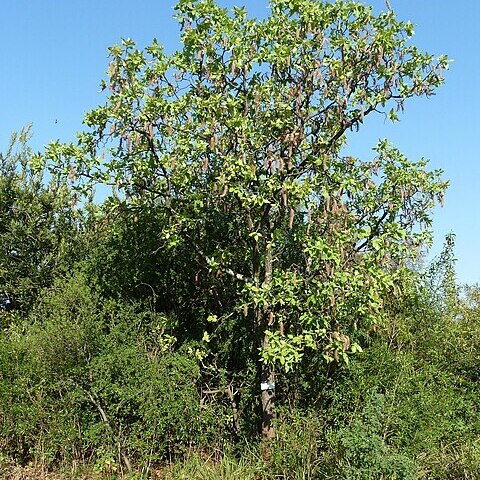Leaves mid-green, older ones turning orange, leathery, ovate-lanceolate to elliptic, up to 21 cm long and 9 cm broad, typically a little more than twice as long as broad but variable, apex ± acute or obtuse, base cuneate, venation prominent, midrib especially so beneath, glabrous above when mature or pubescent towards the base, pubescent ± all over the lower surface, variable, with longish curly spreading hairs; petiole short and stout, 0.5–1.2 cm long, pubescent with curly spreading hairs plus some long straight ones.
A small, spreading, crooked, leafy tree 4-7 m ta ll. Leaves 25-60 mm wide, green above, grey below due to a dense covering of velvety hairs, 70-170 mm long, margi n entire and wavy, turning orange and red in autumn when the fiery colours may lead to confusion with Combretum adenogonium; stalk short and thick, 5-12 mm long, hairy. Flowerhead 220-300 mm long, 30-40 mm across, cream to pink. Flowers 20-25 mm long, densely covered with white hairs. Flowers: March to September.
Spikes up to 22(27) cm long, usually terminal but also sometimes in the axils of the upper leaves; peduncle stout, densely tomentose or tomentellous and sometimes with long spreading straight hairs near the base; bracts at base of peduncle up to 7 mm long, somewhat persistent, narrowly attenuated to apex, villose outside; bracts subtending flowers usually shorter and broader.
A shrub or small tree. It grows 10 m tall. It is spreading and crooked. The leaves are mid green. They are oval to sword shaped and 21 cm long by 9 cm wide. The flower spikes are 22 cm long. They are usually at the ends or branches or near the ends. The flowers are 2-2.5 cm long. They have white hairs.
Perianth pinkish, greenish near apex, 1.5–2.5 cm long, densely pubescent or tomentellous with whitish hairs outside, sometimes with a few long straight hairs inside the tube.
Small tree, up to 7 m high. Leaves broadly ovate, tomentose, subglabrous when quite old. Spike 200 mm long. Flowers dull white, yellow to brownish pink.
Shrub or small tree up to 10 m high, usually spreading and somewhat crooked in habit.
Branchlets stout, at first densely tomentose and somewhat villose, later tomentose.
Hypogynous scales broadly triangular, 1–1.5 mm long, acute or ± cuneate at apex.
Anthers 3–3.5 mm long.




